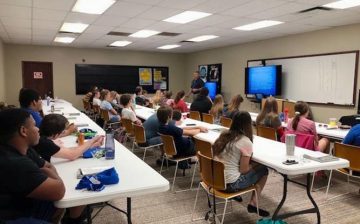Can I Take the Driving Permit Test Without Taking Any Classes and Get My License When I Turn 18?
If you’re 17 years old and eager to get behind the wheel, you might be wondering if you can skip the hassle of driving classes and jump straight into taking the permit test. Let’s explore the options available to young drivers like yourself.
Age Requirements for Obtaining a Driving Permit
In most states, the minimum age for obtaining a driving permit is 16 years old. However, the requirements for taking the permit test vary from state to state. Some states allow individuals as young as 15 to take the test, provided they meet certain criteria such as completing a driver education course.
Eligibility for Skipping Driving Classes
While driver education courses are highly recommended for new drivers, there may be exceptions for individuals who prefer self-study. Laws and regulations regarding driver education differ by state, so it’s essential to check the requirements in your area.
Obtaining a Driver’s License at 18 without Classes
Turning 18 opens up new possibilities for obtaining a driver’s license without completing driving classes. Unlike a driving permit, which has age restrictions and requires completion of a driver education course, a driver’s license typically only requires passing a road test and meeting age requirements set by the state.
Pros and Cons of Skipping Driving Classes
Skipping driving classes may seem appealing for young drivers looking to save time and money. However, there are benefits to formal driver education, such as gaining valuable knowledge and skills from experienced instructors. On the other hand, self-study may lack the structured learning environment provided by driving classes.
Recommendations for Young Drivers
Before deciding to skip driving classes, it’s essential to consider the responsibilities that come with driving. Responsible driving requires more than just passing a test—it requires a commitment to safety and understanding the rules of the road. If you choose to skip classes, be sure to thoroughly study the driver’s manual and practice driving under the supervision of a licensed adult.
Conclusion
While it may be possible to take the 6 hour driving course or driving permit test without taking classes and obtain your license at 18, it’s essential to weigh the pros and cons carefully. Consider your options, and remember that responsible driving is the key to staying safe on the road.
FAQs
- Can I take the permit test before turning 18?
- Yes, in some states, you can take the permit test before turning 18, but you may need to meet certain requirements.
- Do I need to complete driving classes to get my license at 18?
- In many states, you can obtain a driver’s license at 18 without completing driving classes, but requirements vary.
- What are the benefits of taking driving classes?
- Driving classes provide structured education and hands-on training, which can help new drivers develop essential skills and knowledge.
- Can I study for the permit test on my own?
- Yes, you can study for the permit test on your own by reviewing the driver’s manual and taking practice tests.
- What should I do if I’m unsure about skipping driving classes?
- If you’re unsure about skipping driving classes, consider talking to a trusted adult or seeking advice from a driving instructor.




